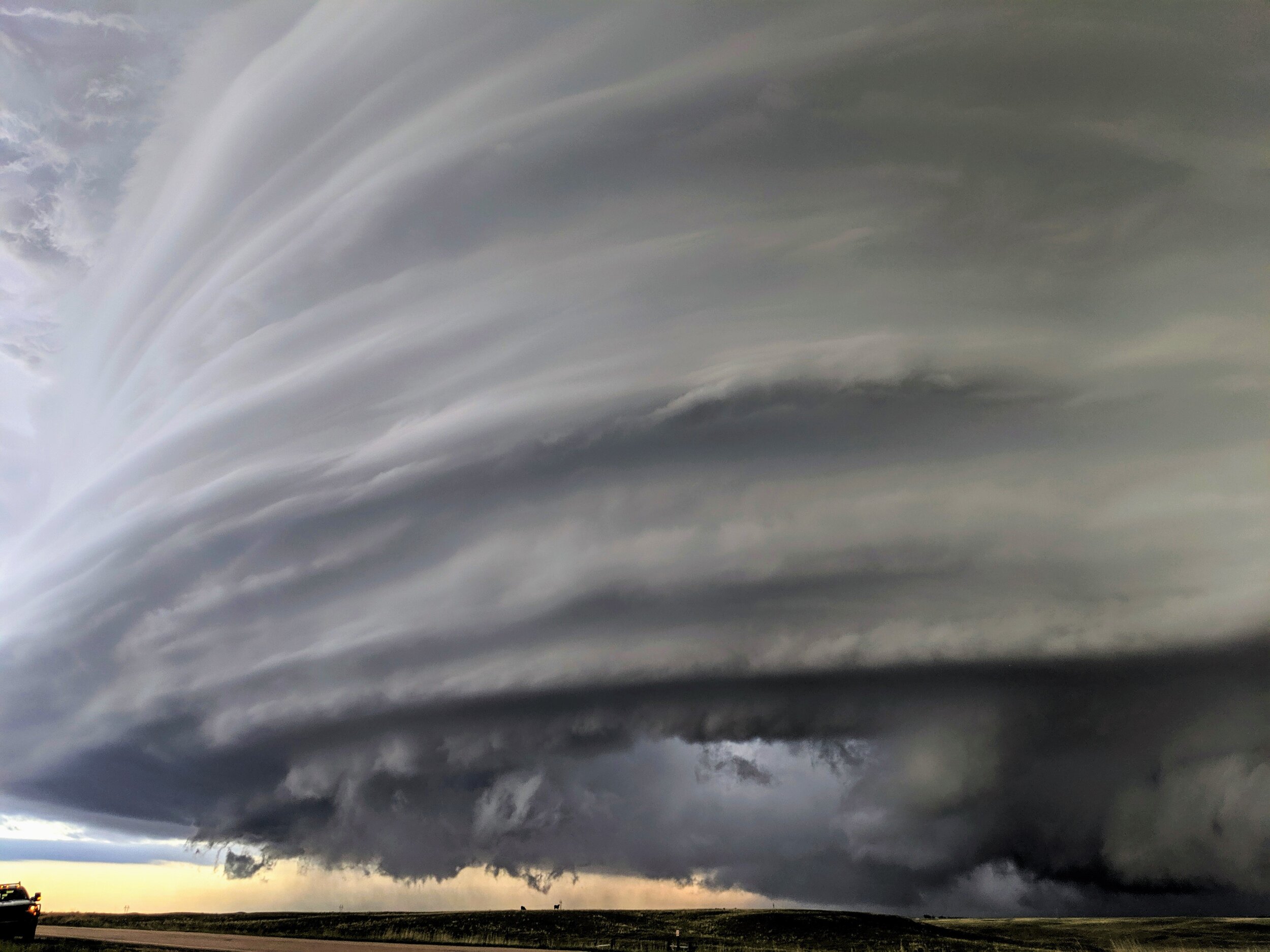
Thunderstorms
Thunderstorms are massive and powerful. Some thunderstorms, rotating in impressive circular structures, are known as supercell thunderstorms. Lightning can be equally impressive, creating amazing (and dangerous!) displays of natural fireworks.
Supercell thunderstorm, Kansas. (Photo by Mike Coniglio / NOAA NSSL)
Supercell thunderstorm, Colorado. (Photo by Christiaan Patterson / OU CIMMS / NOAA NSSL)
Supercell thunderstorm, Nebraska. (Photo by Christiaan Patterson / OU CIMMS / NOAA NSSL)
A storm photographed during the TORUS 2019 campaign. (Photo by Mike Coniglio / NOAA NSSL)
A supercell thunderstom photographed during the TORUS 2019 campaign. (Photo by Mike Coniglio / NOAA NSSL)
Lightning in a supercell thunderstorm, from the TORUS 2019 campaign. (Photo by Mike Coniglio / NOAA NSSL)
A storm photographed during the TORUS 2019 campaign. (Photo by Manda Chasteen / OU CIMMS / NOAA NSSL)
A storm photographed during the TORUS 2019 campaign. (Photo by Glen Kendrick / OU CIMMS / NOAA NSSL)
Lightning striking to the side of a cloud. (NOAA)
Lightning in a supercell thunderstorm in Nebraska, 2019. (Photo by Mike Coniglio / NOAA NSSL)
Multiple lightning strikes in Norman Oklahoma. (Photo by C. Clark, from NOAA Photo Library)
Great Plains lightning in 2009. (Photo by Sean Waugh / NOAA NSSL, from NOAA Photo Library)
Great plains lightning in 2009. (Photo by Sean Waugh / NOAA NSSL, from NOAA Photo Library)
Lightning in Last Chance, Colorado. (Photo by Chris Spannagle, from NOAA Photo Library)
Lightning in Australia. (Photo by Shane Lear, from NOAA Photo Library)
Lightning in Australia. (Photo by Shane Lear, from NOAA Photo Library)
Did you know…
-
Distance to lightning
Want to judge the distance to lightning? Follow this simple rule: once you see the lightning, start counting seconds until you hear the thunder. For every five seconds you count, the lightning is 1 mile away.
-
"Fossilized lightning"
Lightning can heat the air to 50,000°F. If it strikes sand, it can melt sand into a hollow glass tube called a fulgarite.
The photos on this page come from the NOAA Photo Library and the NSSL Flickr page.















